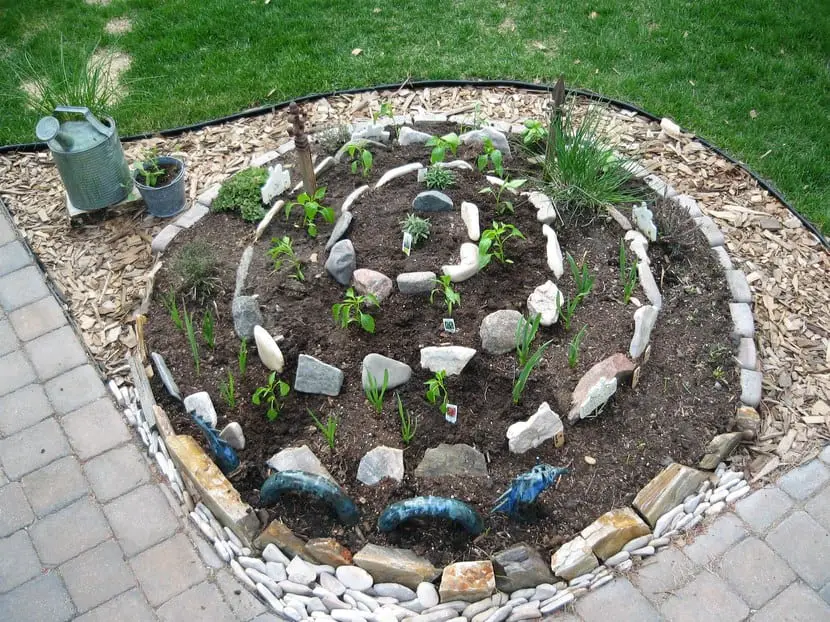

This is not the first time we have talked about having a spiral vegetable gardenan option for those with little space who want to grow a good number of plants in a limited area.
Spiral gardens are not only presented as a very practical solution when there is a lack of space in the home, but they can also have ornamental purposes if they are designed with good taste and precision.
Assembling the garden in a spiral


Of course for make a spiral garden You have to know some questions because the success of the project will depend on this and the solid base so that the plants that grow staggered do so in good condition.
For, build your own spiral garden You can use basic materials that you can even have at home: wood, stones, logs, compost, etc. Ideally, choose a raised space in the garden or design it a few inches above the ground.
The first step in starting the process is plan the garden in a spiralorganizing it from different areas in which plants with different needs will be located. Then you will have to trace a spiral-shaped drawing on the ground that will serve as a guide. On the drawing, place small stones to reinforce the line and then choose bricks, wood or any other element that will serve as a support to create the garden. Place the elements vertically or horizontally one above the other creating a spiral in height so that there is a higher area and a lower one, being able to have one or more areas in the middle.
As you build the spirals, you will fill them with soil until you finish the general design of the spiral garden.
Zones and crops of a spiral garden


If we talk about a standard spiral garden you can divide it into three different areas in order to locate similar plants in each of them. In the lower part, mix the soil with compost, in the middle area you can create a space with soil, two parts of substrate and one of sand, and in the upper area you can create a drier area by placing more sand than in the rest. This difference in terrain will allow you to grow different species.
Now how do you know what to grow in a spiral garden? These gardens are ideal for aromatic herbs as they do not grow too large and allow you to incorporate a variety of crops. According to the characteristics of each area you can plant in the following way:
1. High part, with dry and very sunny substrate: thyme, oregano, lavender.
2. Middle part: coriander, chamomile, tarragon, valerian, lemon balm, coriander.
3. lower part, less sunny and more humid: calendula, spearmint, mint, celery, chives, wormwood, anise, parsley, onions.

One thought on “Tips for building your own spiral garden”